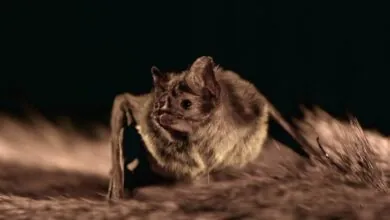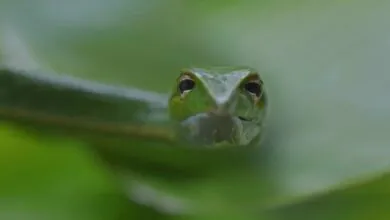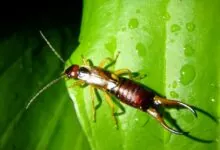Nudibranch Species around the World: Explore Their Diversity
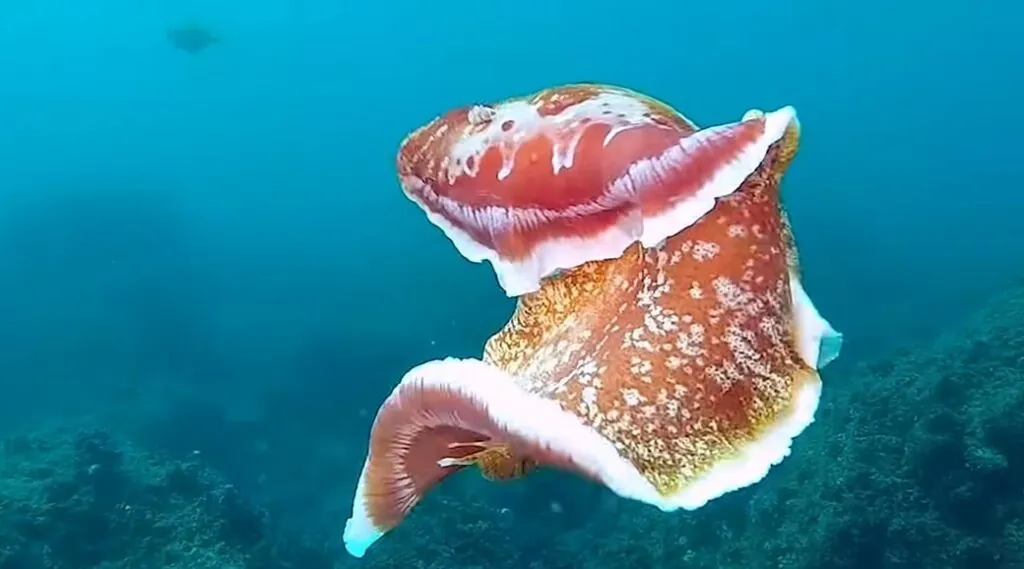
I adore plunging into underwater world bursting with vivacious colors and bizarre shapes. But, believe me, nothing quite prepares you for the sight of a nudibranch! These dazzling sea slugs, sometimes titled “sea bunnies” or “clowns of the sea,” have ditched their shells for a life of mind-blowing adaptations. There’s a striking variety of nudibranch species out there, each with unique feature.
Join me in my journey to unpack the mysteries behind their shimmering bodies, surprising diets and awe-inspiring diversity that makes them the unparalleled superstars of the reef!
| Kingdom | Phylum | Class | Order | Scientific Name |
| Animalia | Mollusca | Gastropoda | Nudibranchia | Nudibranchia |
Scientific Name
Nudibranchs belong to a taxonomic order within the phylum Mollusca – the same group that includes snails, clam and octopuses. “Nudi” comes from the Latin word “nudus” meaning naked and “branchia” refers to gills. So, literally, nudibranch translates to “naked gills,” manifesting their lack of a shell and the presence of external gills.
Nudibranch Species
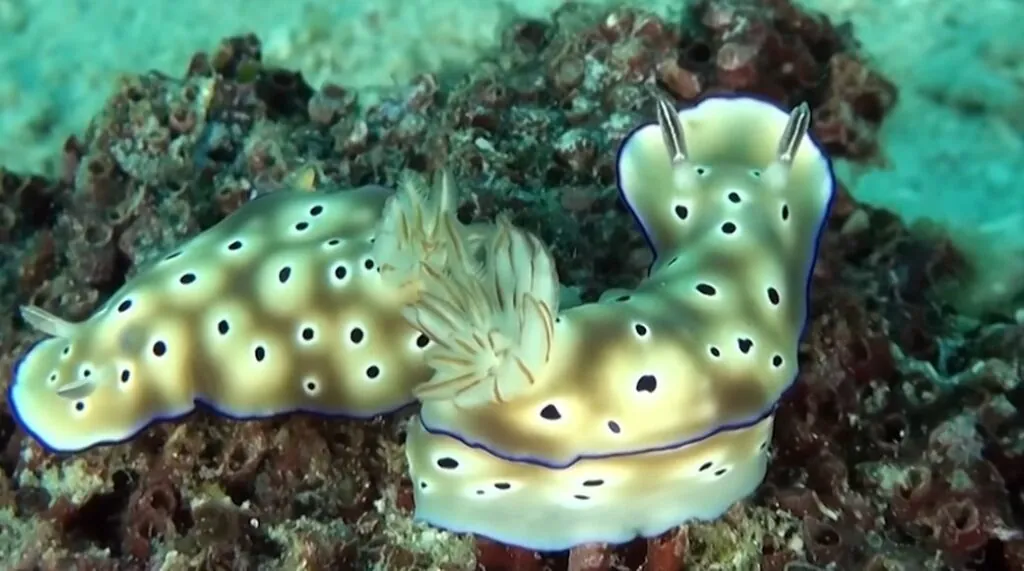
There’re over 3,000 nudibranch species, each with exclusive characteristics. Here’s a quick list presenting a few fascinating nudibranchs:
Chromodoris lochi
The species sport orange body with black spots outlined in blue rings in addition to ellow mantle edge and purple/vilent gills. They thrive in tropical Indo-Pacific reefs (Philippines, Indonesia, Coral Triangle) at depths of 3 to 20 meters.
Spanish Dancer
It boasts an elongated body with six finger-like processes (cerata) and flamboyant red, orange and yellow coloration. The Spanish dancer inhabit in tropical and subtropical Indo-Pacific and Atlantic Oceans – coral reefs and rocky shores.
Glaucus atlanticus (Blue Dragon, Sea Swallow)
The species has blue body with silver spots and finger-like protrusions along its sides. It floats upside down at the ocean’s surface. It inhabits Pelagic waters of the Atlantic, Pacific and Indian Oceans. It’s carnivorous and feeds on venomous Portuguese Man o’ War (Physalia physalis).
Phyllodesmium magnum (Solar-Powered Nudibranch)
The species sport leaf-like body with translucent green or yellow coloration and scattered purple spots. They’re found in Indo-Pacific coral reefs. Being herbivorous, their diet of solar-powered nudibranch consists of algae.
Phylliroe bucephalum (Sea Angel)
They showcase transparent, wing-like body with a single purple digestive gland visible through its body. They thrive in deep, pelagic waters of the Atlantic, Pacific and Indian Oceans. Sea angels feed on jellyfish and salps.
Chromodoris annae (Anna’s Chromodoris)
These species are vivaciously colored with a yellow body embellished with red spots and markings. They feature a unique defense mechanism known as “reflex bleeding.” It releases toxic compounds though its skin when threatened.
Phyllodesmium serratum
This nudibranch species has a leaf-like body with serrated edges and comes in a plethora of color combinations. They have a symbiotic relationship with zooxanthellae. The algae provide the nudibranch with nutrients through photosynthesis.
Dendronotus iris (Lion’s Mane Nudibranch)
It’s known for its spectacular cerata, which is akin to a lion’s mane and can be white, orange or tipped with purple. The species is a voracious predator the feeds on other nudibranchs.
Halgerda batangas
This nudibranch has a translucent body with a network of orange veins and finger-like processes. What makes this species conspicuous is its unique behaviors, including “tail-standing,” where it raises its tail vertically when disturbed.
Nembrotha kubaryana (Variable Neon Slug)
The variable neon slug exhibits a wide array of color variations, often with neon accents. The species can ingest toxic compounds from its prey, such as sponges and incorporate them into its own tissues for defense.
Hypselodoris infucata
It has a leathery body with a bumpy texture and comes in various shades of orange, brown and yellow. Some individuals of this nudibranch species feature a phenomenon known as “gynandromorphism” where they possess both male and female reproductive organs on different sides of their body.
Chromodoris willani (Willan’s Chromodoris)
The species boasts yellow body with orange and black spots. It displays a remarkable form of mimicry known as “cryptic coloration,” where its color pattern closely resembles the toxic species Phyllidia varicosa.
Flabellina exoptata
This type of nudibranch has a translucent body with slender cerata in shades of pink, orange, and purple. It engages in a behavior known as “solar charging,” where it spreads its cerata outwards to maximize exposure to sunlight.
Elysia chlorotica (Eastern Emerald Elysia)
It is known for its ability to steal chloroplasts from algae and use them for photosynthesis. It can sustain itself for month solely through photosynthesis.
Origin and Evolution
Evolutionary History
When it comes to the nudibranch’s origin, they’re thought to have descended from shelled gastropods millions of years back. Evidence proposes they branched off from a group with a planktonic (drifting) larval stage.
With the march of time, these ancestors likely evolved to lose their shells during larval development. It resulted in the lighter, more maneuverable body’s characteristic of nudibranchs.
Genetic Composition and Diversity
Nudibranchs, with over 3,000 known species, feature a high degree of genetic diversity. They, like most mollusks, are diploid organisms. It implies that they have two sets of chromosomes – one from each parent. Genetic variation can influence factors like coloration, size and even feeding preferences.
Environmental Adaptations
Nudibranchs have adapted to a stretched range of marine environments – from shallow reefs to the deep ocean. Many nudibranch species utilize vibrant colors for camouflage or as a warning to predators. For instance, some brightly colored species may be toxic due to chemical they acquire from their prey.
Many species lack a shell, which make them vulnerable to predators. They’ve evolved various chemical defense mechanisms. Depending on their diet, they’ve developed a plethora of specialized mouthparts and digestive systems. Herbivorous species may have specialized radulae for scraping algae. On the flip side, carnivores may have features for capturing and consuming prey.
Nudibranch Distribution
From the frigid polar waters to the warm tropical coral reefs, nudibranchs are found in all the world’s oceans. Indo-Pacific boasts the highest diversity of nudibranch species, with hotspots in the Coral Triangle (Southeast Asia) and the Philippines.
They’re also located in the tropical and temperate water of Atlantic, including the Caribbean Sea and the Mediterranean. In Pacific Ocean, expressly the temperate and topical zones, harbors a rich array of nudibranchs. It has unique species found along the coasts of North America, Japan and Australia.
Geography
| Continents | All continents except Antarctica |
| Countries | Found in coastal regions worldwide |
| Bio-geographical Realms | All major marine realms (e.g., Atlantic, Pacific, Indian) |
| Biome | Marine |
| Climate Zones | Tropical, temperate, and polar (up to high latitudes) |
Habitat
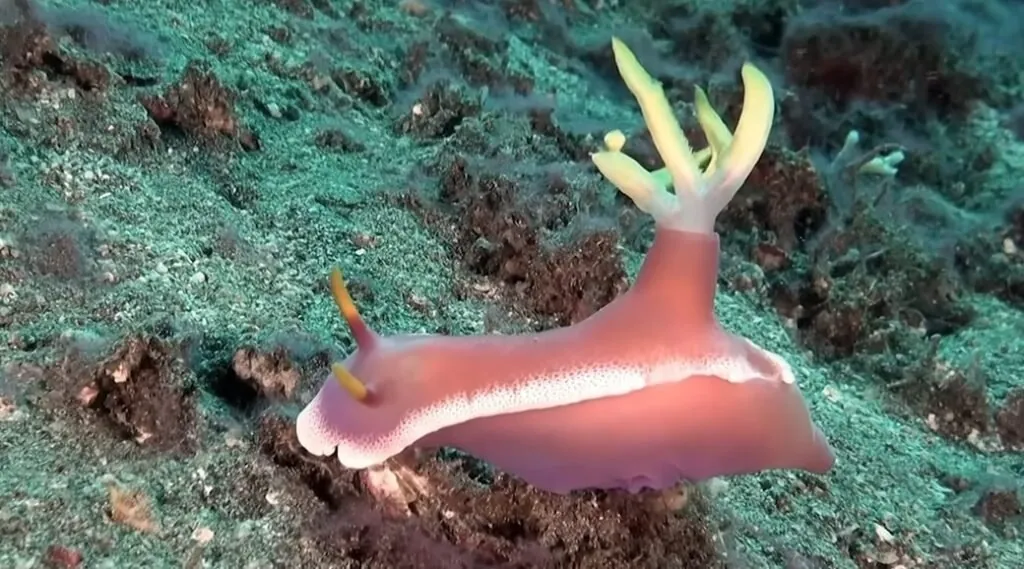
Habitat Preferences
In terms of the nudibranch’s habitat, they can be found in all world’s oceans. Each species has specific habitat preferences, such as coral reefs, rocky shores, seagrass beds and deep sea. Over and above these broad categories, they oftentimes exploit specific microhabitats, including sponges, algae-covered surfaces hydroid colonies and seagrass blades and stems.
Habitat Utilization Patterns
Some nudibranchs are chiefly active in the course of the day, while other are nocturnal, feeding and moving around the night. Their activity patterns are synchronized with the tides. They may become more active during high tide when submerged and seek shelter. Explore the incredible diversity of Nudibranchs and their importance in marine ecosystems at the Monterey Bay Aquarium.
5 Nudibranch Facts
Appearance
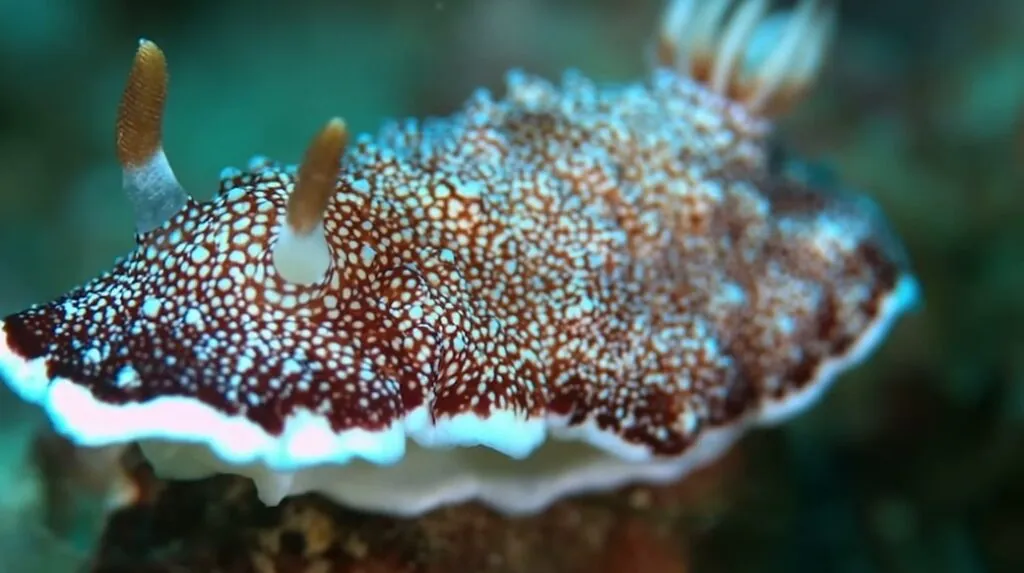
Physical Characteristics
Size: The nudibranch’s size ranges from a mere millimeter to over 30 centimeters (12 inches) in length. The majority falls between 2 and 6 cm (0.8-2.4 inches).
Shape: Generally their bodies are elongated and soft, oftentimes resembling slugs or flatworms.
Color: Speaking of the nudibranch’s color, they boast a plenty of hues, including orange, yellow, red, purple, blue and black.
Markings: Many nudibranchs have intricate patterns of dots, stripes or line adorning their bodies.
Distinctive Features: Some nudibranchs species possess unparalleled features that set them apart, such as rhinophores, gills and cerata.
Delve deeper into the fascinating world of these soft-bodied marvels and their unique adaptations at the Smithsonian Ocean Portal.
Nudibranch Anatomy
| Color(s) | Wide variety, often brightly colored and patterned |
| Tongue | Modified for feeding, equipped with a radula (rasping organ) |
| Mouth | Located on the ventral side of the head, used for feeding |
| Feet | Flat and muscular, used for crawling and locomotion |
Reproduction and Life Cycles
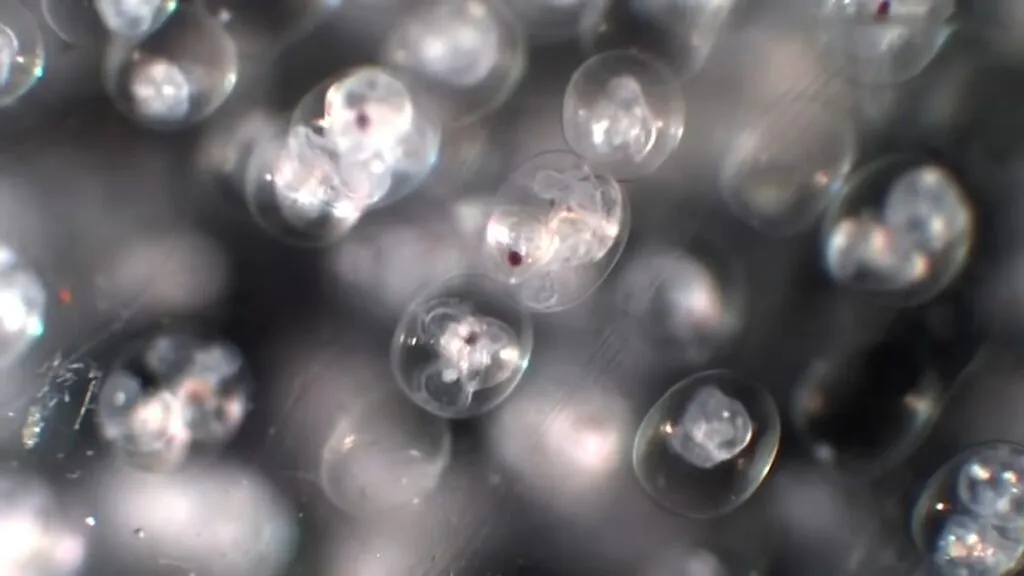
Mating System
Nudibranchs feature an array of mating systems, where some species employing a strategy that best suits their environment and lifestyle:
Numerous nudibranchs release pheromones to attract mates. These chemicals signals can travel through the water. Additionally, there’re some that engage in elaborate courtship behaviors, crawling alongside each other.
Reproductive Biology
Nudibranch breeding can occur year-round in tropical regions. Notwithstanding, temperate species may have specific breeding seasons led by environmental cues. They fertilize their eggs externally and lay them in gelatinous ribbons or clusters attached to rocks, algae or other underwater structures.
Life Cycle Stages
Egg: Nudibranchs lay fertilized eggs in gelatinous ribbons or clusters. These egg masses can contain eggs from a few hundred to millions of eggs.
Veliger Larva: Upon hatching, nudibranchs emerge as microscopic veliger larvae. They tiny organisms possess a transparent body with a prominent velum.
Metamorphosis: The veliger larva undergoes an intricate metamorphosis, losing its shell and velum. The digestive system, nervous system and other organs are reorganized to suit the bottom-dwelling lifestyle of an adult nudibranch.
Adult: They emerge from metamorphosis with its signature soft body, external gills and color patterns.
The lifespan of nudibranchs varies depending on the species and environmental factors. Generally, they live for a few months to a year,
Mating Habits
| Mating Behavior Simultaneous hermaphrodites, exchange sperm during copulation | |
| Reproduction Season Can reproduce year-round, depending on species and environment | |
| Litter Size Large, ranging from thousands to millions of eggs | |
| Baby Carrying Eggs are laid in ribbons or spirals and develop independently | |
| Independent Age Shortly after hatching, planktonic for a period before settling on the seafloor |
Diet and Lifestyle
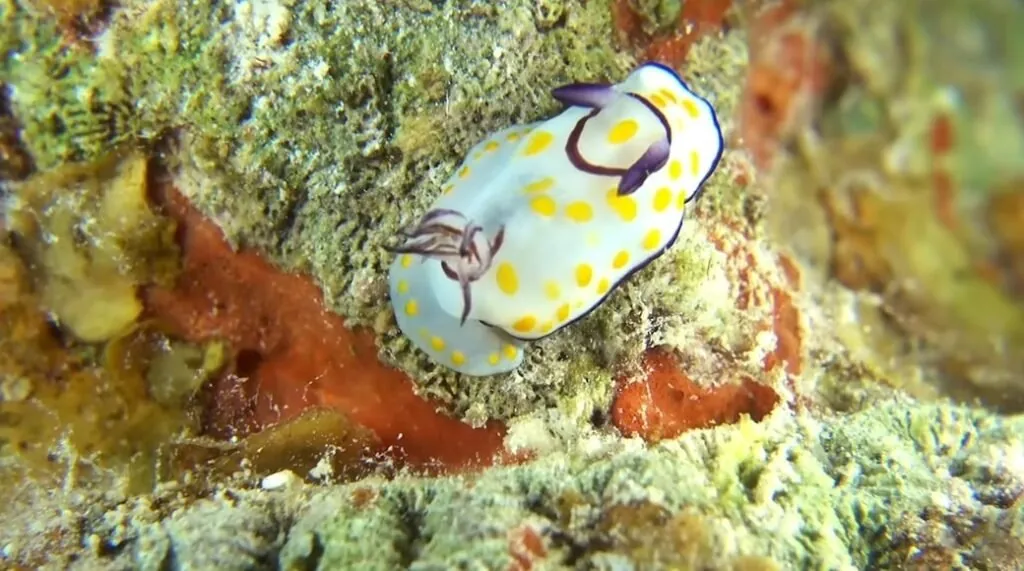
Feeding Ecology
Some nudibranch species, such as those feeding on algae, graze directly on plant material, acting as primary consumers in the marine food web. The majority of nudibranchs are carnivores or scavengers – feeding on a plethora of invertebrates.
Foraging Strategies
Numerous nudibranchs rely on their sense of smell, suing chemoreceptors to pinpoint the chemical signatures of their prioritized prey. These creatures employ their sensitive bodies and oral tentacles to explore their surroundings and locate food items.
Unique Characteristics
Forge a path through an intriguing journey as we unfold fascinating facts about nudibranchs – truly captivating animals that start with N. Join us in shedding light on their remarkable rundown!
| Common Name | Nudibranch |
| Other Name(s) | Sea slug |
| Number of Species | Over 3,000 |
| Lifespan | Varies by species, typically 1-2 years |
| Length | Varies by species, typically 1-30 cm |
| Predators | Fish, crabs, birds |
| Prey | Sponges, hydroids, anemones, other small invertebrates |
| Most Distinctive Feature | Wide variety of vibrant colors and often elaborate body shapes |
FAQs

